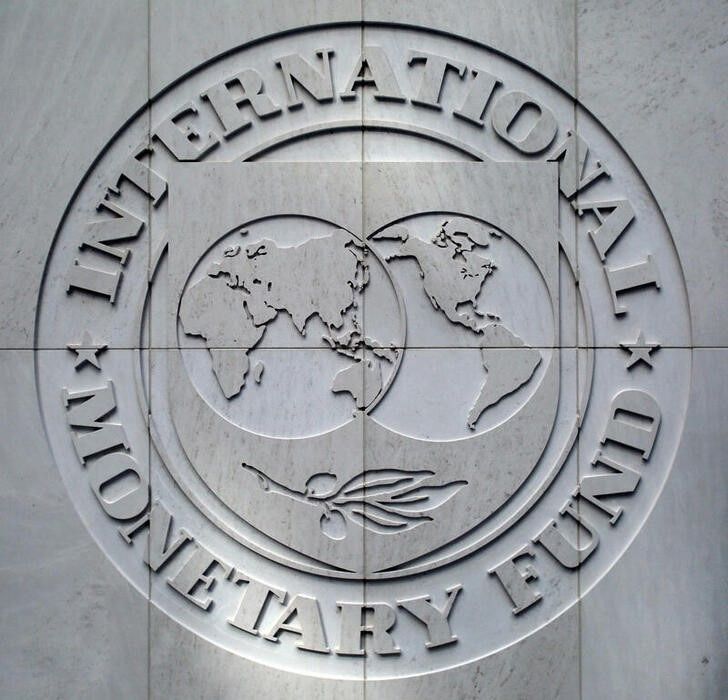The International Monetary Fund (IMF) has announced that the world’s total public debt is expected to surpass $100 trillion this year for the first time, with growth potentially outpacing previous forecasts due to a political climate favoring increased spending and rising borrowing needs amid slow economic growth.

According to the IMF’s latest Fiscal Monitor report, global public debt is projected to reach 93% of global gross domestic product (GDP) by the end of 2024, approaching 100% by 2030.
This would exceed the peak of 99% recorded during the COVID-19 pandemic and marks a 10 percentage point increase from 2019 levels prior to the pandemic’s impact on government spending.
The report was released ahead of the annual meetings of the IMF and World Bank in Washington. It highlights factors that could lead to future debt levels being significantly higher than currently anticipated, including increased spending initiatives in the United States, the world’s largest economy.
The IMF stated, “Fiscal policy uncertainty has heightened, and political opposition to taxation has solidified.” It also noted that pressures to increase spending are growing to address issues such as green transitions, population aging, security concerns, and ongoing development challenges.
Campaign Spending Promises
The IMF’s warnings about rising debt come just three weeks before the U.S. presidential election, where candidates from both parties have proposed tax cuts and spending increases that could add trillions to federal deficits.
Republican candidate Donald Trump’s proposed tax cuts could increase debt by approximately $7.5 trillion over the next decade, while Democratic nominee Kamala Harris’s plans could add around $3.5 trillion, according to central estimates from the Committee for a Responsible Federal Budget (CRFB), a budget think tank.
The report indicates that debt projections often underestimate actual outcomes, with realized debt-to-GDP ratios typically averaging 10% higher than originally forecast five years ahead.
Global public debt could see a significant rise due to weak growth, tighter financing conditions, and greater fiscal and monetary policy uncertainties in major economies like the U.S. and China. In a “severely adverse scenario,” global public debt could climb to 115% in just three years, 20 percentage points higher than current projections.
Spending Breaks
The IMF reiterated its call for more fiscal consolidation, stating that the present environment, characterized by solid growth and low unemployment, is an opportune time for such measures. However, it noted that current efforts, averaging 1% of GDP from 2023 to 2029, are inadequate to effectively reduce or stabilize debts.
To achieve stability, a cumulative tightening of 3.8% is necessary, but in the U.S., China, and other countries where GDP is projected to keep rising, significantly greater fiscal tightening will be essential.
The U.S. is expected to report a fiscal 2024 deficit of about $1.8 trillion, exceeding 6.5% of GDP, according to the Congressional Budget Office.
Countries including Brazil, Britain, France, Italy, and South Africa, where debt is also forecast to continue growing, may face severe consequences. Era Dabla-Norris, the IMF’s deputy fiscal affairs director, warned that delaying adjustments could necessitate a larger correction in the future.
She highlighted that high debt levels and a lack of credible fiscal plans could provoke negative market reactions and limit countries’ capacity to respond to future shocks.
Dabla-Norris noted that cuts to public investment or social spending tend to have a far more detrimental effect on growth compared to less targeted subsidies, like those for fuel.
She suggested that some countries could expand their tax bases and enhance tax collection efficiency, while others might improve tax progressivity by effectively taxing capital gains and income.






















































![[FREE FREE MONEY] Predict and Win a Guaranteed GH¢200 From Us EVERY WEEK](https://wordpress.ghanatalksradio.com/wp-content/uploads/2022/02/Predict-and-Win-Final-09-03-2021-218x150.jpg)
![[Predict & Win – 8th/Oct.] WIN A Guaranteed ¢200 From Us This Week](https://wordpress.ghanatalksradio.com/wp-content/uploads/2021/10/maxresdefault-16-218x150.jpg)
![[Predict & Win – 2nd] WIN A Guaranteed ¢200 From Us This Week](https://wordpress.ghanatalksradio.com/wp-content/uploads/2021/09/maxresdefault-50-218x150.jpg)
![[Predict & Win – 25th] WIN A Guaranteed ¢200 From Us This Week](https://wordpress.ghanatalksradio.com/wp-content/uploads/2021/09/maxresdefault-36-218x150.jpg)
![[Predict & Win – 18th] WIN A Guaranteed ¢200 From Us This Week](https://wordpress.ghanatalksradio.com/wp-content/uploads/2021/09/maxresdefault-23-218x150.jpg)








![[National cathedral] See full list of churches that have contributed since 2018](https://wordpress.ghanatalksradio.com/wp-content/uploads/2020/09/Ghana-National-Cathedral-GhanaTalksRadio-100x70.jpg)



